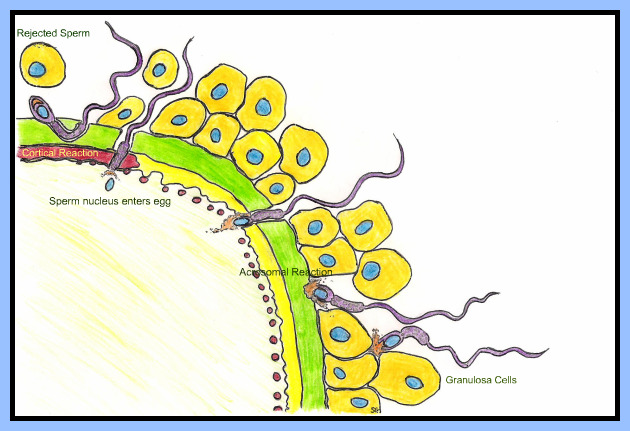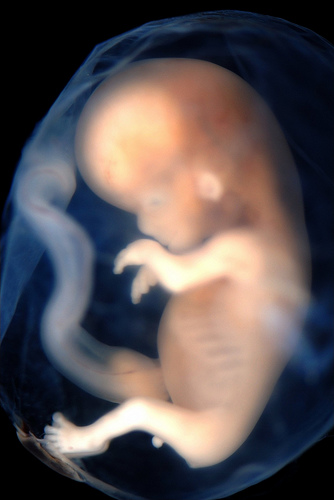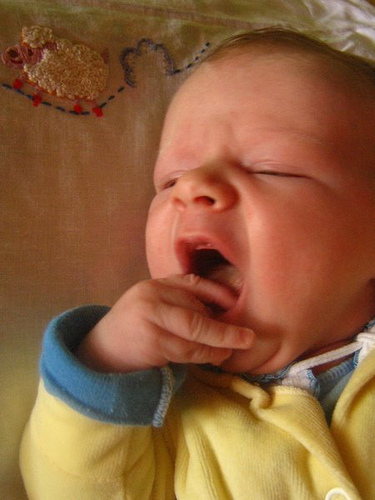Final act of fertilisation
The sperm finally enters the egg and the tail is left outside. When this happens, a wave of calcium starts from the site of sperm entry and spreads across the fertilised egg, causing a change in the physiology of the egg membrane, stopping other sperm entering, and triggering the two nuclei to fuse.
The paternal nucleus from the sperm then fuses with the maternal nucleus from the egg. This combines the two haploid collections of chromosomes together to form a full diploid set of 46 chromosomes ie. 23 pairs.
It should be noted that only maternal mitochondria are inherited by the offspring as the egg destroys the mitochondria in the sperm.
Meiosis II in the ovum is only completed if the it undergoes fertilisation. In the formation of a second polar body, the fertilised egg loses one chromatid from each chromosome. Swelling of sperm and egg nuclei occurs and they become pronuclei. A mitotic spindle forms and each pronucleus ruptures causing the chromosomes of each gamete to combine to give a diploid set. The organism is now called a zygote and it is ready for its first mitotic division.
Fertilisation is now complete!
Drawing based on fig 29.1 in Anatomy and Physiology, unity of form and function, 4th ed, Saladin, McgrawHill



